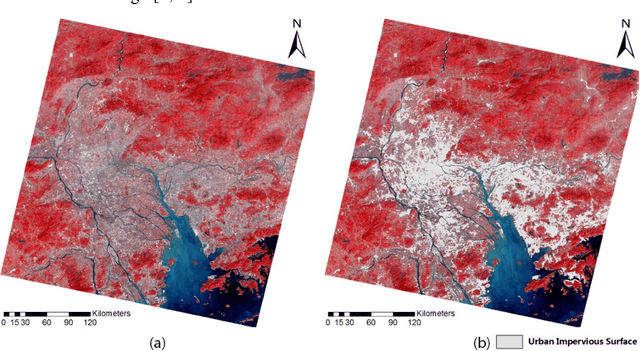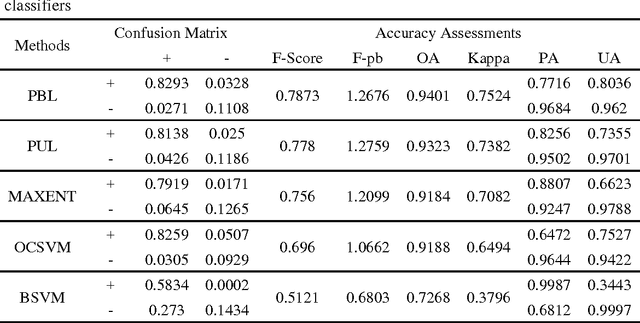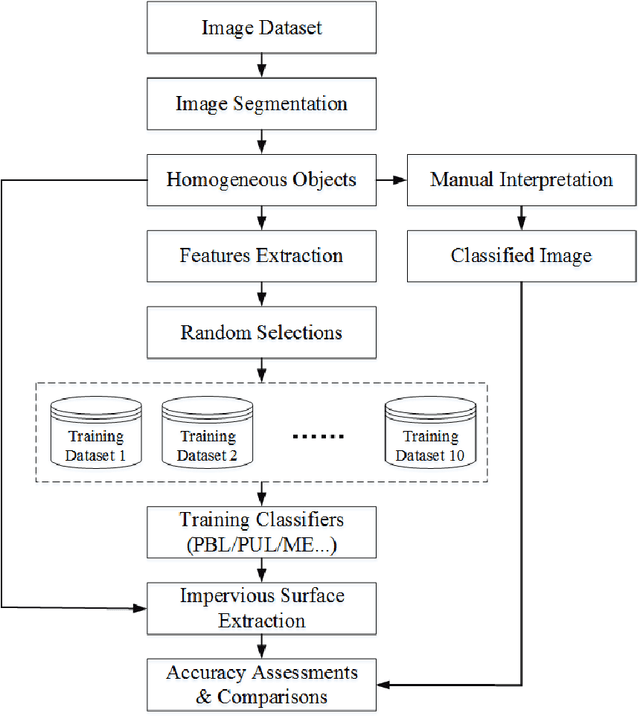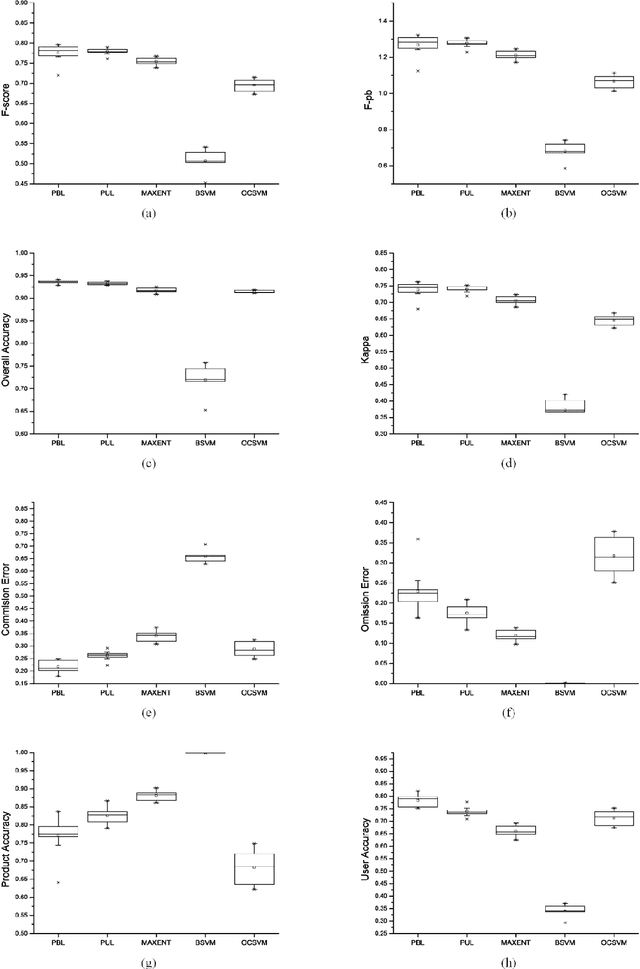Extracting urban impervious surface from GF-1 imagery using one-class classifiers
Paper and Code
May 13, 2017



Impervious surface area is a direct consequence of the urbanization, which also plays an important role in urban planning and environmental management. With the rapidly technical development of remote sensing, monitoring urban impervious surface via high spatial resolution (HSR) images has attracted unprecedented attention recently. Traditional multi-classes models are inefficient for impervious surface extraction because it requires labeling all needed and unneeded classes that occur in the image exhaustively. Therefore, we need to find a reliable one-class model to classify one specific land cover type without labeling other classes. In this study, we investigate several one-class classifiers, such as Presence and Background Learning (PBL), Positive Unlabeled Learning (PUL), OCSVM, BSVM and MAXENT, to extract urban impervious surface area using high spatial resolution imagery of GF-1, China's new generation of high spatial remote sensing satellite, and evaluate the classification accuracy based on artificial interpretation results. Compared to traditional multi-classes classifiers (ANN and SVM), the experimental results indicate that PBL and PUL provide higher classification accuracy, which is similar to the accuracy provided by ANN model. Meanwhile, PBL and PUL outperforms OCSVM, BSVM, MAXENT and SVM models. Hence, the one-class classifiers only need a small set of specific samples to train models without losing predictive accuracy, which is supposed to gain more attention on urban impervious surface extraction or other one specific land cover type.
 Add to Chrome
Add to Chrome Add to Firefox
Add to Firefox Add to Edge
Add to Edge